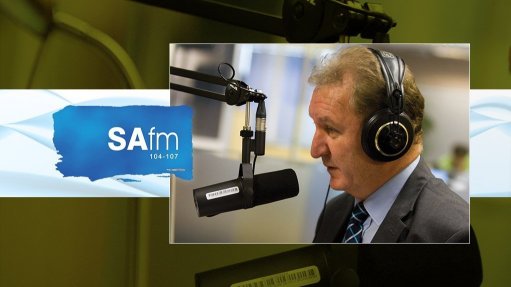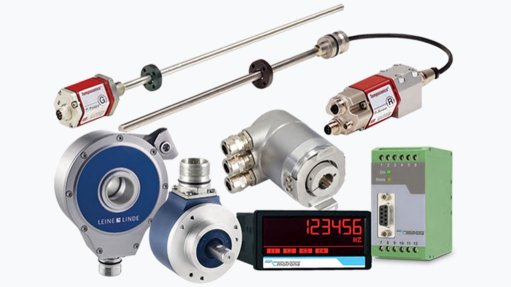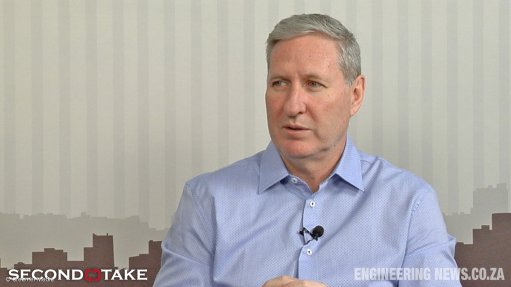Ramokgopa convinced ‘sweet spot’ will be found to unlock Independent Power Transmission projects

NTCSA chairperson Priscillah Mabelane speaks with Engineering News Editor Terence Creamer about the role of the new State-owned grid company, its immediate priorities, and the approach NTCSA could take to Independent Power Transmission projects. Recording and Editing: Shadwyn Dickinson. Recorded: 7.10.2024
Electricity and Energy Minister Dr Kgosientsho Ramokgopa has expressed confidence that government and the National Transmission Company South Africa (NTCSA) are close to finding the “sweet spot” that will facilitate the integration of private Independent Power Transmission (IPT) projects.
Such projects could help accelerate the expansion of the grid, which has emerged as a bottleneck for new renewables projects in particular, and help unlock 53 GW of mostly renewables generation in the coming ten years. In South Africa, IPT projects are also referred to as Independent Transmission Projects, or ITPs.
Speaking at the formal launch of the NTCSA, which started trading as an independent subsidiary of Eskom Holdings on July 1, Ramokgopa insisted he had no intention of overreaching in his role as shareholder Minister and that the board should determine independently what IPT model would be acceptable to the NTCSA.
However, he highlighted the success of the IPT model internationally in helping to accelerate the development of grid infrastructure, highlighting that in Brazil, Chile, Peru and India, the model had enabled close to 100 000 km of new transmission lines between 1998 and 2015 and had helped mobilise private capital for the grid of more than $24.5-billion.
“We are not guinea pigs,” Ramokgopa asserted, adding that South Africa had an opportunity to use its late-mover status to draw on best practices from other countries while localising the IPT model for its own circumstances.
“[But] one thing I have said to Priscillah Mabelane [NTCSA chairperson] is that we will not overreach.
“The board has fiduciary responsibilities and duties to protect the financial interests of NTCSA, while I have a duty to resolve the energy question in the country and ensure that we will achieve conditions of energy sovereignty and energy security.
“And those interests are not misaligned – there is a sweet spot we are seeking for,” he said with reference to ongoing deliberations on what model should be adopted.
The Minister also praised the work of the World Bank and its Multilateral Investment Guarantee Agency in seeking to develop a credit guarantee vehicle that could provide guarantees to IPTs without placing further strain on the NTCSA balance sheet, or add to the National Treasury’s contingent liabilities.
IPT OPTIONS UNDER CONSIDERATION
In an interview with Engineering News, Mabelane said the NTCSA was open to considering all IPT models, including a ‘build, operate and transfer’ framework.
“We are not selective subject to the sweet spot on risk sharing, as we do not have a balance sheet to guarantee build, operate and transfer [projects].”
In weighing the options, she indicated that NTCSA was seeking to draw lessons from the independent power producer procurement programme, which had facilitated R282.2-billion in mostly renewables investment since 2011, with the support of State guarantees.
“So if we can address that particular point [the guarantees], we can actually accelerate access to the private sector,” Mabelane added.
She said a lot of work had already been done on IPT models and argued that the next key milestone would be the finalisation of regulations in terms of Section 34, which would be required before a procurement determination could be released.
It has been widely reported that the actual procurement was likely to be undertaken by a new office outside of the NTCSA, developed along the lines of the Independent Power Producer Office.
“We believe that the biggest part of it is to make sure that the risk-sharing mechanism is balanced.”
In his address, interim NTCSA CEO Segomoco Scheppers reported that the regulations required for ITP procurement would be developed by the first quarter in 2025.
“This will be followed by a Ministerial determination for an ITP pilot,” he said.
R112BN CAPEX PLAN
In parallel, Scheppers revealed that the NTCSA board had approved R112-billion in capital expenditure for the coming five years to begin delivering on the Transmission Development Plan’s (TDP’s) goal of energising 14 000 km of new powerlines and adding 122 000 MVA of new transformer capacity by 2032 so as to connect 53 GW of new generation.
An updated TDP was scheduled to be published later this month, but Scheppers indicated that NTCSA’s five-year investment plan envisaged facilitating nearly 30 GW by the end of the decade, with 1 250 km of powerlines planned for delivery by 2027 together will several transformers to ensure the connection of 11 GW.
This own-build portion would be delivered under NTCSA’s previously announced “hybrid” delivery model comprising its traditional in-house approach to design and project management, as well as turnkey projects built using the engineering, procure and construct contracting model.
Mabelene told Engineering News that any capacity developed under the IPT framework would be in addition to the transmission investments that would be made by NTCSA itself.
Both Mabelane and Scheppers also stressed, however, that the investment plan was premised on it receiving the required revenues through the tariff, as well as a ringfencing of those revenues for NTCSA and the reform of the tariff structure to reflect both the cost of sales and grid services.
The NTCSA has applied for allowable revenue of R101-billion, R115-billion and R155-billion for the three financial years covered by Eskom Holdings under its controversial sixth multiyear price determination.
In the unlikely event that the full application for revenue of R446-billion is granted for 2025/26 by the regulator, the direct Eskom tariff would rise by 36.15% on April 1 next year, followed by an average 43.55% hike in municipal tariffs from July 1.
Article Enquiry
Email Article
Save Article
Feedback
To advertise email advertising@creamermedia.co.za or click here
Comments
Press Office
Announcements
What's On
Subscribe to improve your user experience...
Option 1 (equivalent of R125 a month):
Receive a weekly copy of Creamer Media's Engineering News & Mining Weekly magazine
(print copy for those in South Africa and e-magazine for those outside of South Africa)
Receive daily email newsletters
Access to full search results
Access archive of magazine back copies
Access to Projects in Progress
Access to ONE Research Report of your choice in PDF format
Option 2 (equivalent of R375 a month):
All benefits from Option 1
PLUS
Access to Creamer Media's Research Channel Africa for ALL Research Reports, in PDF format, on various industrial and mining sectors
including Electricity; Water; Energy Transition; Hydrogen; Roads, Rail and Ports; Coal; Gold; Platinum; Battery Metals; etc.
Already a subscriber?
Forgotten your password?
Receive weekly copy of Creamer Media's Engineering News & Mining Weekly magazine (print copy for those in South Africa and e-magazine for those outside of South Africa)
➕
Recieve daily email newsletters
➕
Access to full search results
➕
Access archive of magazine back copies
➕
Access to Projects in Progress
➕
Access to ONE Research Report of your choice in PDF format
RESEARCH CHANNEL AFRICA
R4500 (equivalent of R375 a month)
SUBSCRIBEAll benefits from Option 1
➕
Access to Creamer Media's Research Channel Africa for ALL Research Reports on various industrial and mining sectors, in PDF format, including on:
Electricity
➕
Water
➕
Energy Transition
➕
Hydrogen
➕
Roads, Rail and Ports
➕
Coal
➕
Gold
➕
Platinum
➕
Battery Metals
➕
etc.
Receive all benefits from Option 1 or Option 2 delivered to numerous people at your company
➕
Multiple User names and Passwords for simultaneous log-ins
➕
Intranet integration access to all in your organisation

















